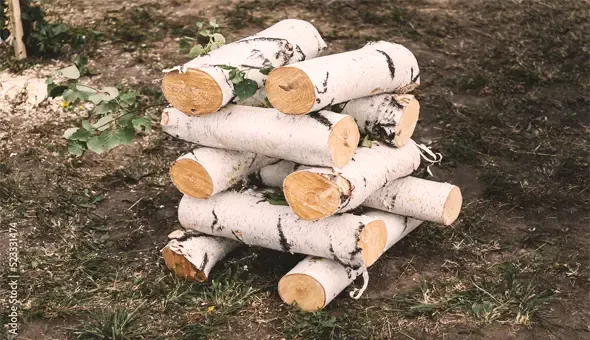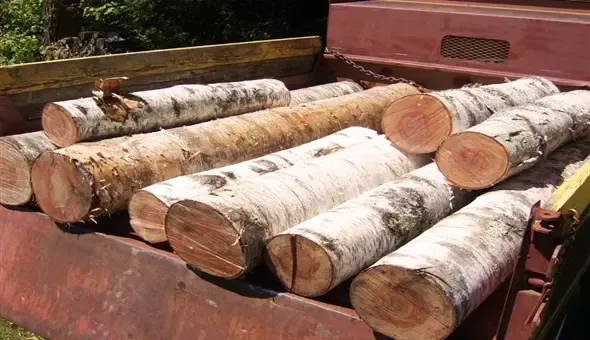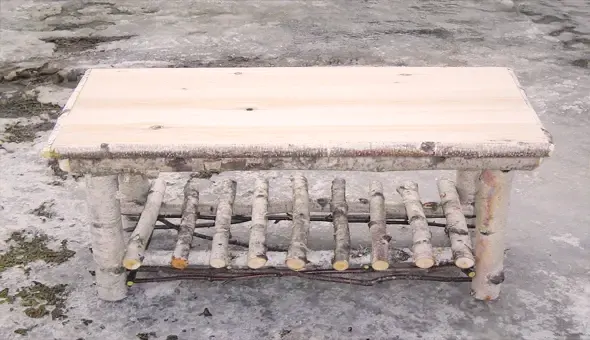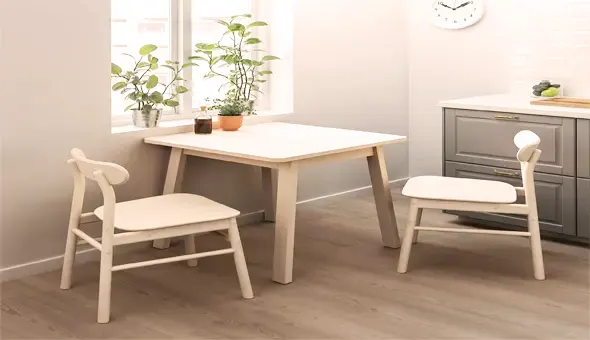White Birch Lumber
- July 26, 2023
- 0 comment
White Birch lumber sourced from Europe is renowned as a premium and coveted timber due to its exceptional qualities, making it a preferred choice among woodworkers and craftsmen. The wood originates from the European White Birch (Betula pendula) tree, alternatively called Silver Birch or Common Birch, which flourishes in diverse regions across Europe, including Scandinavia, Russia, and parts of Eastern Europe.

One of the key reasons for its popularity lies in its appealing aesthetics, characterized by a pale, even color and a fine, straight grain pattern. This elegant combination bestows a sense of refinement to the lumber, making it highly sought-after for an extensive array of applications, whether for interior embellishments or exterior projects.
The inherent versatility of European White Birch further contributes to its acclaim. It possesses exceptional woodworking properties, allowing it to be easily cut, shaped, and machined with precision, endearing it to woodworkers who delight in crafting intricate and detailed designs. Moreover, the wood’s ability to hold screws and nails securely, coupled with its capacity to accept stains and finishes beautifully, makes it a joy to work with for artisans seeking a flawless finish.
| Common Name(s) | European White Birch, Silver Birch, Common Birch |
|---|---|
| Scientific Name | Betula pendula |
| Distribution | Europe (Scandinavia, Russia, Eastern Europe) |
| Tree Size | 50-70 feet tall, 1.5-2.5 feet in trunk diameter |
| Average Dried Weight | 27 lbs./ft3 (430 kg/m3) |
| Specific Gravity | 0.43 |
| Janka Hardness | 860 lbf (3,830 N) |
| Modulus of Rupture | 13,100 psi (90 MPa) |
| Elastic Modulus | 1.69 million psi (11.65 GPa) |
| Crushing Strength | 7,580 psi (52 MPa) |
| Shrinkage | Radial: 4.5%, Tangential: 8.2%, Volumetric: 12.8% |
Characteristics
Color/Appearance
White Birch offers a delightful range of colors that enhance its appeal in various applications. The heartwood is typically creamy white to pale yellowish-brown, while the sapwood appears nearly white. One of the distinctive features of this wood is the occasional presence of a subtle reddish-brown hue, especially in the heartwood. This adds a touch of warmth and character to the lumber, making it a preferred choice for projects where aesthetics play a crucial role.


Grain/Texture
The grain pattern of European White Birch is generally straight, contributing to its clean and elegant appearance. Along with the straight grain, the wood showcases a fine and even texture, adding to its visual appeal. This fine texture allows for a smooth and polished finish when the wood is worked, making it suitable for applications where a refined look is desired, such as high-end furniture and cabinetry.
Rot Resistance
While White Birch is not naturally resistant to decay and is susceptible to rot when exposed to moisture and outdoor elements, it can be effectively treated with preservatives. Properly treated Birch can significantly improve its resistance to decay and increase its durability, making it suitable for some outdoor applications like siding, decking, and outdoor furniture.
Workability
One of the most outstanding characteristics of White Birch lumber is its excellent workability. The wood is relatively easy to work with, responding well to cutting, shaping, and machining. This workability makes it a favorite choice among woodworkers, as it enables them to create intricate and detailed designs with ease. Additionally, White Birch holds screws and nails well, allowing for secure joinery, and it accepts stains and finishes beautifully, enhancing its appearance even further.
Odor
White Birch generally lacks a distinct or characteristic odor. This is advantageous, particularly in interior applications, where strong odors might not be desired, ensuring the wood does not impart any unwanted smells to the surrounding environment.
Allergies/Toxicity
Birch wood, including White Birch, is generally considered non-toxic and is not known to cause severe allergic reactions in most individuals. However, as with any wood dust, it is advisable to take proper safety precautions when working with Birch lumber, such as wearing a dust mask and using adequate ventilation.
Pricing/Availability
White Birch lumber is widely available throughout Europe, where it is commonly harvested. Due to its abundant supply and sustainable sourcing practices, the wood is usually moderately priced, making it accessible to a wide range of consumers and woodworkers.
Sustainability
White Birch is considered a sustainable choice for lumber due to its relatively fast growth rate and responsible forestry practices in Europe. Foresters carefully manage the harvesting and replanting of Birch trees, ensuring the continued availability of this valuable timber resource.



Common Uses
White Birch lumber finds a multitude of applications in woodworking due to its appealing characteristics. It is frequently used for furniture-making, including cabinets, chairs, tables, and other indoor furniture pieces. The smooth and refined appearance makes it an ideal choice for interior millwork, such as paneling and trim. Additionally, White Birch is a popular wood for crafting veneers used in high-end cabinetry and decorative items. When treated for improved rot resistance, Birch can also be employed for exterior applications, such as siding, decks, and outdoor furniture. Its versatility and attractive appearance make it a favored material for various specialty items, turned objects, and decorative pieces.
Frequently Asked Questions
- What is White Birch lumber, and where does it come from?
White Birch lumber is a type of wood that comes from the White Birch tree (Betula pendula) native to Europe. It is renowned for its light color, smooth texture, and attractive grain patterns. - Why is White Birch lumber popular? White Birch lumber is popular due to its appealing appearance, versatility, and relatively low cost. It is widely used in various woodworking projects, including furniture, cabinetry, flooring, and interior trim.
- Is White Birch lumber sustainable?
Generally, White Birch is considered a sustainable wood choice. European forestry regulations and responsible forest management practices help ensure the preservation and replenishment of White Birch forests. - What are the typical dimensions of White Birch lumber?
White Birch lumber is available in various dimensions and thicknesses. Common thicknesses include 4/4 (1 inch) and 8/4 (2 inches), while widths range from 4 inches to 12 inches and lengths can vary based on the supplier. - How does White Birch compare to other hardwoods?
White Birch is softer than many other hardwoods like oak, maple, or cherry. While it may not be as dense and durable as those woods, it still offers excellent workability and can be stained or finished to resemble more expensive hardwoods. - Can White Birch lumber be used for outdoor projects?
White Birch lumber is not particularly resistant to decay and weathering, so it is not recommended for outdoor use without appropriate treatment and protection, such as applying a weather-resistant finish or using it in covered areas. - Does White Birch lumber require any special maintenance?
White Birch lumber is relatively low-maintenance. Regular cleaning and applying wood finishes or sealants can help preserve its appearance and protect it from wear and tear. - Where can I buy White Birch lumber from Europe?
You can purchase White Birch lumber from Europe through various sources, including specialty lumberyards, woodworking suppliers, and online retailers that deal with imported wood products. - Can White Birch be stained or painted easily?
Yes, White Birch takes stains and paints well due to its relatively smooth and even grain. However, it is essential to prepare the wood properly before applying any finish to achieve the best results. - Does White Birch lumber have any unique characteristics?
White Birch lumber is known for its attractive pale color, fine texture, and occasional dark streaks or markings, which can add character to the finished product. - Is White Birch suitable for carving or intricate woodworking?
Yes, White Birch’s relatively soft nature makes it suitable for carving and intricate woodworking projects. It can be easily shaped and worked with various hand and power tools. - Are there any health concerns related to using White Birch lumber?
White Birch is generally considered safe to work with, but some individuals may be sensitive to wood dust. It’s advisable to use proper dust extraction systems and wear appropriate safety equipment when working with any wood.
We’re excited to hear from you! Feel free to share your personal experiences and thoughts about White Birch lumber in the comments section below. Your insights could be a valuable resource, aiding fellow enthusiasts in making well-informed decisions when working with this versatile wood!










Leave your comment